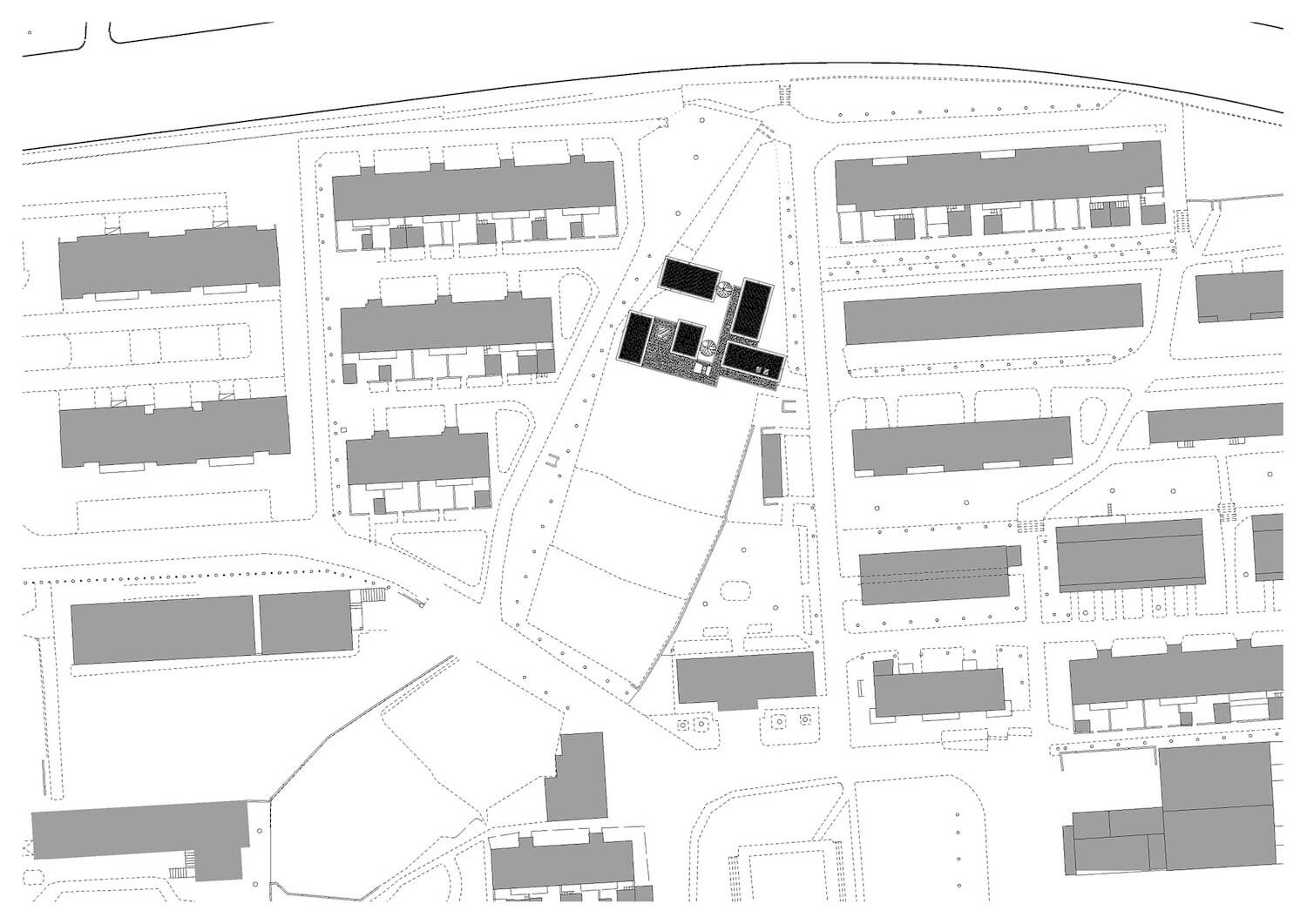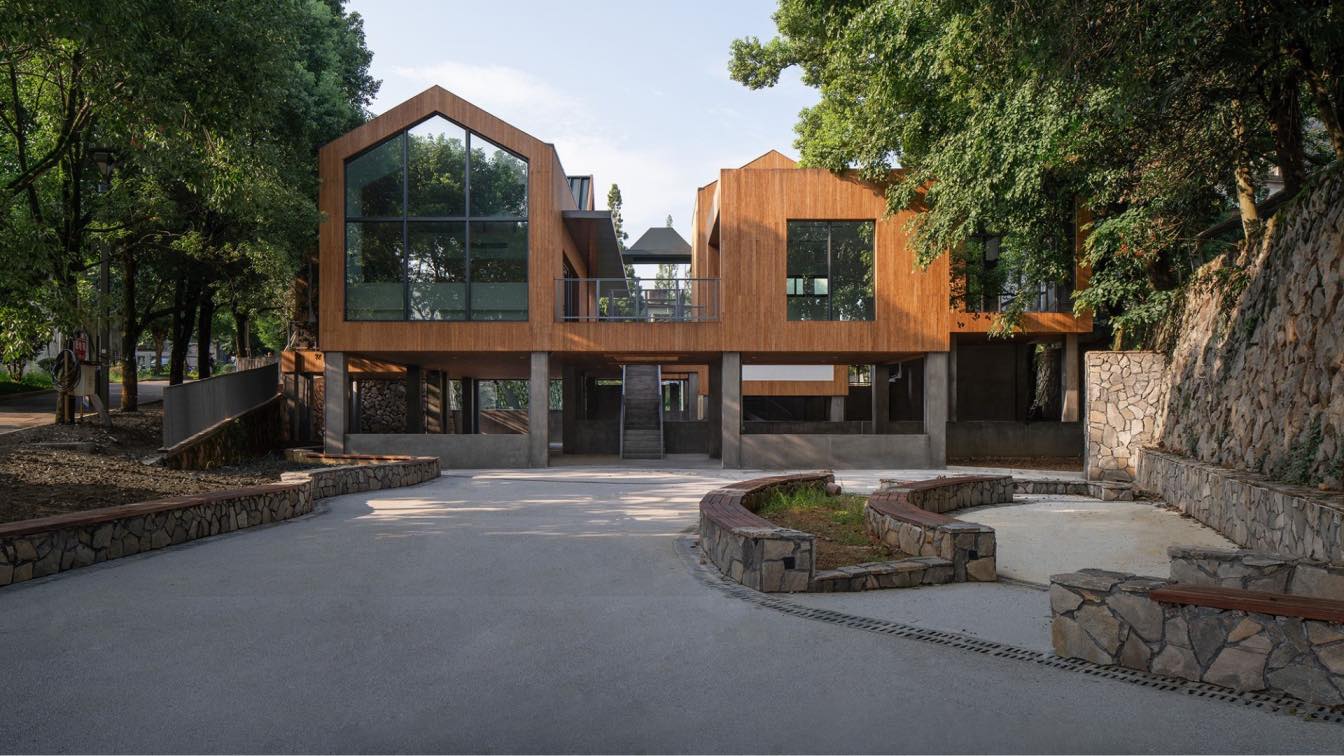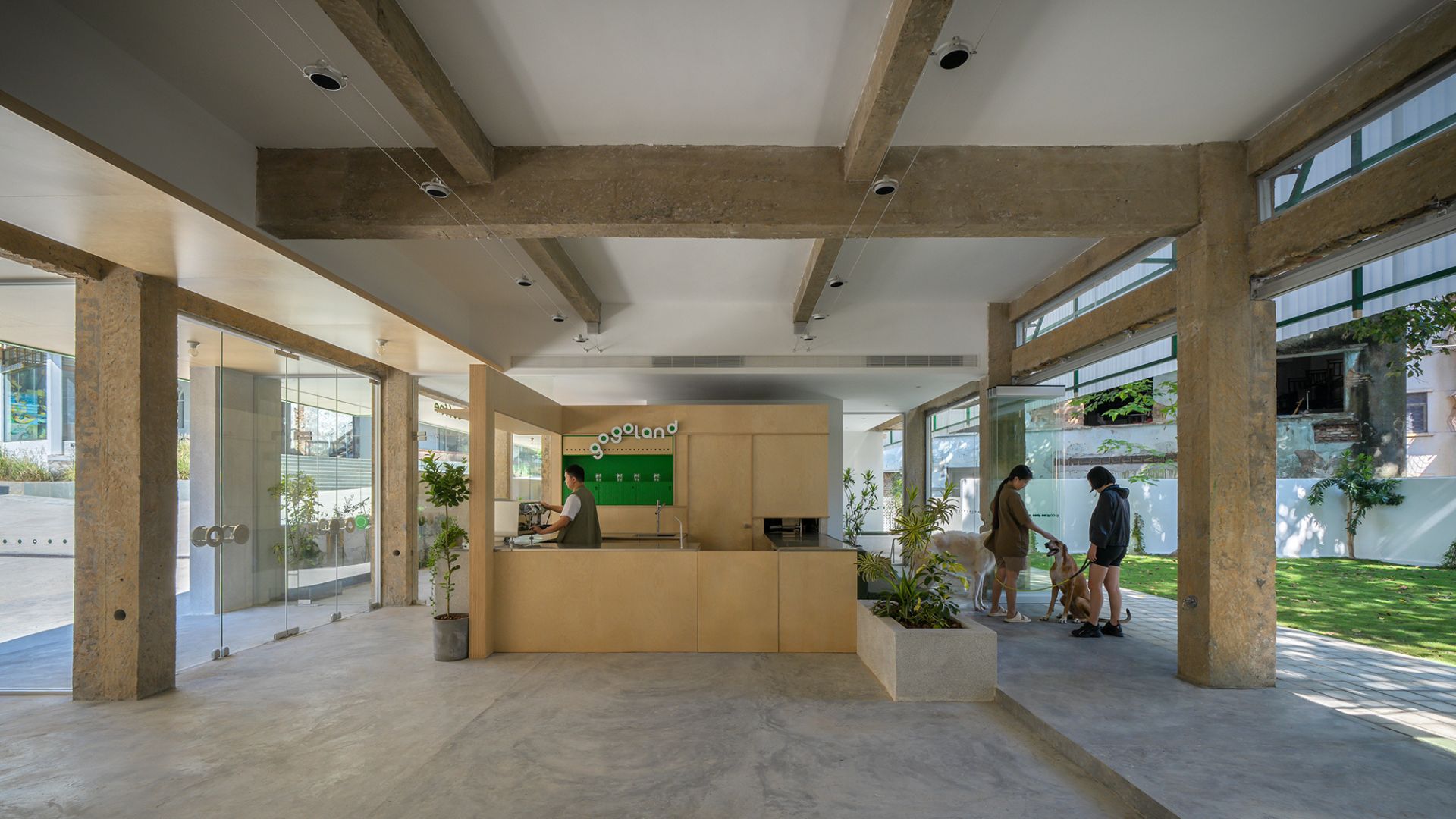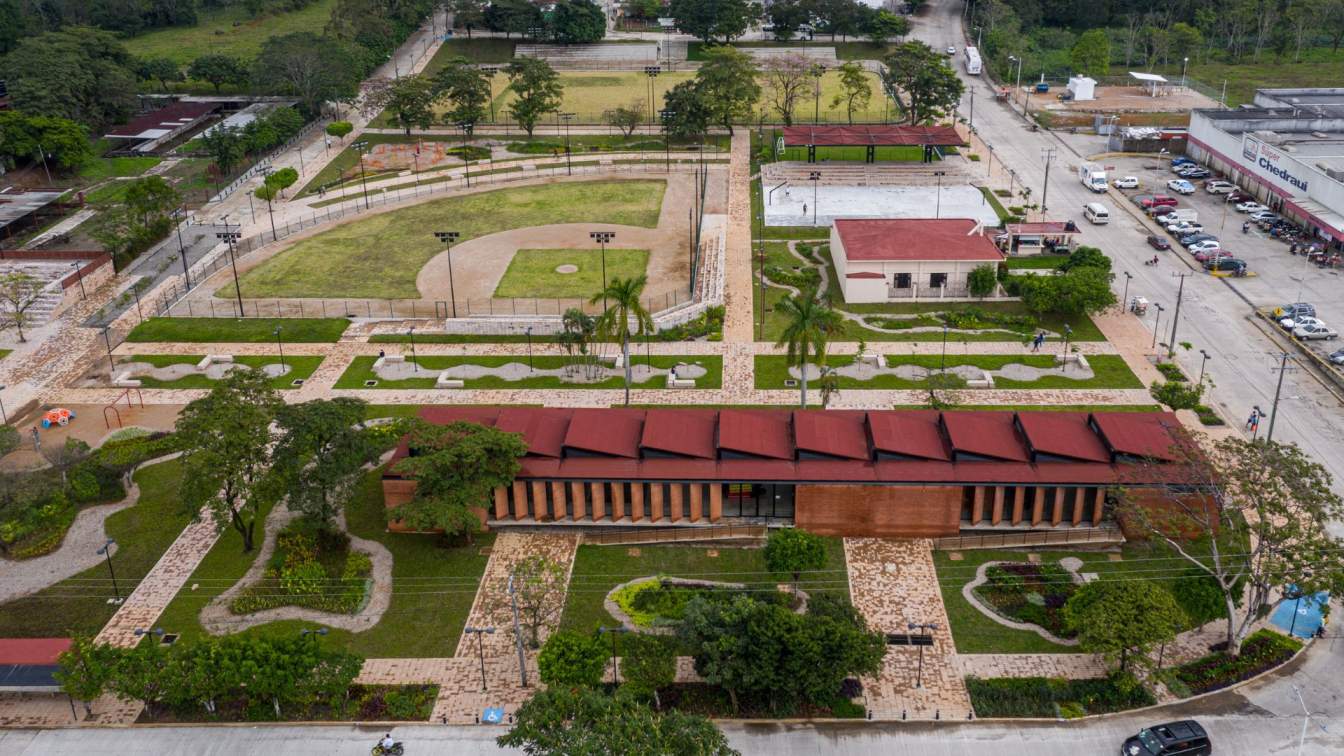Shanghai-based y.ad studio has engaged in the construction of the Rural Future Community of Xikou, a renewal project that transforms a residential quarter for pyrite workers built over 60 years ago into a vibrant rural future community with a distinct local identity of Xikou Town. The Future Community Center, the only newly constructed building in this community, marks the completion of the entire rural renew project.
The project site is nestled within a sunken vegetable field, with an irregular shape. The land slopes gently towards the north and rises gradually towards the south. The east and west sides are stone retaining walls shaded by lush green trees.
The entire site is situated at a lower elevation compared to the surrounding road, creating a distinctive elevation difference. Access to the site is available by walking downwards from the east road. Flanked by residential areas on both the east and west sides, the site faces an urban main road to the north, isolated by a noticeable elevation difference. The south side of the site faces the community's primary road, ensuring that the community center will serve as a captivating visual centerpiece for the community upon its completion.
During the planning phase, the site was envisioned as a future community hub with the primary goal of creating a versatile public space that caters to individuals of all ages and serves various purposes through space and architectural design, striving to embody the vision of a future community that prioritizes sharing, automation, smart technology, sustainability, and a strong sense of neighborhood.

The building offers a diverse range of facilities and amenities including the Party-mass service center, indoor and outdoor play areas for children, climbing walls, a designated space for housewives, self-service kiosks, a dedicated learning area for senior citizens, healthcare facilities, a lectures hall and yoga room for knowledge sharing and wellness activities, as well as public gathering and leisure areas.
To address the lower position of the site, the building was elevated by raising the ground floor to match the height of the east-west road. This elevation made the community center a "bridge" that connects the circulation routes of the east and west communities, previously separated by varying elevations. The stilt floor and front yard of the building accommodated a children's sand pool and a public gathering and entertainment space, providing a leisure area for the community to enjoy.
Furthermore, the vacant space in the front yard was repurposed as a parking area to alleviate some of the parking demand. Based on functional needs, the elevated building blocks were strategically dispersed through organic juxtaposition and combination. Various functional spaces were interconnected through a series of outdoor and semi-outdoor corridors. Vertical stairs and steps were incorporated to facilitate movement between the upper and lower spaces.
The intention behind this design approach was to utilize the building as a medium for connecting the circulation routes and establishing connections between the community and the site. By reducing the separation between the two communities and eliminating the inconveniences caused by the original elevation difference, a multi-level connective space was achieved.









































